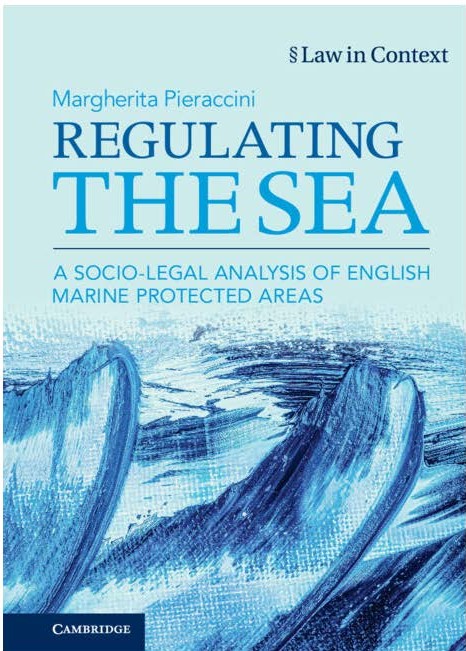Improving the social acceptability of Highly Protected Marine Areas (HMPAs)

Conservation and restoration of coastal and marine environments are key environmental targets.
The United Nations calls for conserving 30% of the planet’s marine and coastal habitat by 2030 (30 by 30 target). Highly Protected Marine Areas (HPMAs) can contribute towards the 30 by 30 target as they are areas of the sea that are strictly protected. New initiatives and plans to introduce HPMAs in England and Scotland are underway.
However, HPMAs are not neutral conservation tools, but highly contested and politicised spaces. Being strict marine reserves, they limit access to resources. Sea-users and marine publics can perceive them as ‘fortress’ conservation. Social and political resistance to HPMAs is a central problem that environmental regulation needs to tackle when establishing them.
To address this problem, regulatory methodologies should be as inclusive as possible. This involves three main steps:
- moving away from a trade-off logic between environmental and socio-economic priorities,
- avoiding assuming that actors represent a single and fixed interest,
- working towards the development of shared understandings from the outset.
Regulatory methodologies are broadly defined to include tools for valuing and assessing regulatory interventions, such as impact assessments, as well as participatory approaches to decision-making.
Policy recommendations
Reforming environmental regulation will contribute to the social acceptability of HPMAs. Key recommendations include:
- Regulatory methodologies should highlight the interdependence between natural and social systems. They should avoid being based on assumptions separating nature and society.
- The meaning of ‘socio-economic’ in legislation and regulation (e.g. socio-economic consequences of establishing Marine Conservation Zones in England or nature conservation Marine Protected Areas in Scotland) should be widely defined. Avoid a narrow interpretation of ‘economic losses’ only.
- Recognise ‘softer’ values in decision-making.
- Impact assessments should have a qualitative dimension. This should be given equal weight to the quantitative dimension to account for what cannot be measured and monetised.
- Inclusive participation in decision-making should happen at an early stage. The nature of the contribution should not be predefined. This will enable new perspectives and voices to emerge.
- Pre-conceived ideas of stakeholders and their interests should not be used when deciding who participates in decision making. Participants should not be grouped based on alleged group identities (e.g. fishers representing fishing costs).
- Language used in participatory decision-making should be non-technical. This will ensure wide participation and mutual understanding. Third party proposals for HPMAs should not require the use of technical language.
- Data used as evidence is drawn from different disciplines and scales. This should include social as well natural sciences, and global assessments as well as local knowledge.
Key Findings
My research has provided an in-depth socio-legal exploration of the establishment and management of marine protected areas. It uses mixed methods approaches including desk-based research and empirical work.
A key finding has been that weaknesses in regulatory methodologies have a negative impact on the social acceptability of marine protected areas. These weaknesses include:
- Marine Protected Areas regulation mostly operates under a cost-benefit logic. Trading factors against each other highlights conflict between environmental and (socio-) economic values. For example, decisions regarding activities that can go ahead in nature conservation MPAs in Scotland and in Marine Conservation Zones in England are based on balancing environmental and non-environmental factors.
- Impact Assessment for designating marine protected areas use a cost-benefit analysis model. This oversimplifies complex values and relationships. In doing so, they don’t take account of values that are difficult to measure, such as people’s attachment to a place. Dividing benefits and costs, and using simple metrics to represent complex values, does not do justice to entangled social-ecological processes.
- Socio-economic issues are considered in marine protected areas regulation from the time of designation, but they are often reduced to an analysis of economic costs. The ‘social’ in socio-economic considerations is often underrepresented in decision making.
- Existing participatory decision-making processes set up rigid distinctions between groups (e.g. fishing communities versus conservationists). This reduces inclusive processes into a balancing exercise between perspectives that are assumed to be fixed.
- The use of technical language is a key barrier to meaningful participation. Explaining environmental criteria and objectives using technical language and requiring third parties to use this language risks excluding many voices who cannot speak in technical terms but hold important local knowledge.
- Marine Protected Areas are complex social-ecological systems. Regulation tends to pigeonhole different types of knowledge and scales.
Overcoming these weaknesses by designing more inclusive regulatory methodologies is a key step for HPMAs regulation.
Further Information
This briefing draws on work published in Margherita Pieraccini’s book Regulating the Sea: a socio-legal analysis of English marine protected areas published by Cambridge University Press in 2022.
Author
Professor Margherita Pieraccini, University of Bristol
Policy Briefing 131: May 2023
Improving the social acceptability of Highly Protected Marine Areas (HMPAs) (PDF, 618kB)
